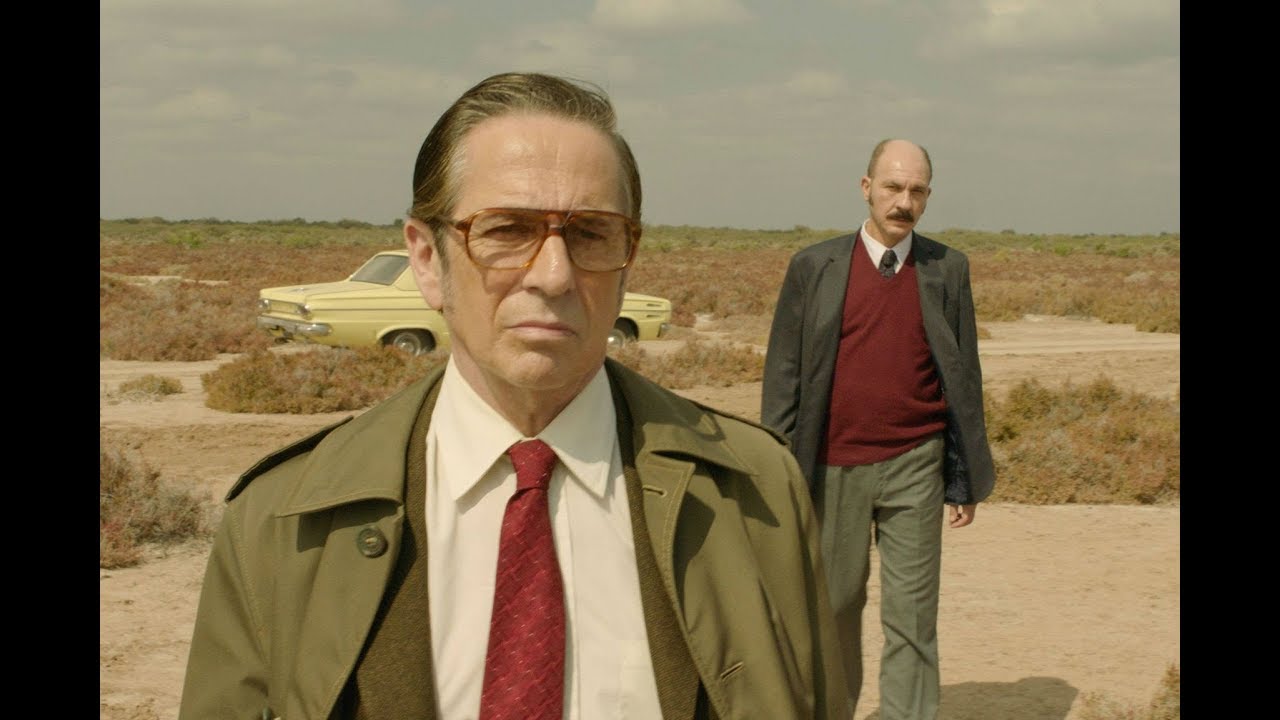“Rojo” – It’s 1975 in Argentina. Looking back at history, but looking forward within writer/director Benjamin Naishtat’s film, a right-wing coup will overthrow Argentina’s President Isabel Peron in a move called the “National Reorganization Process” in March 1976.
So, in 1975, the country’s politics are uncertain, but life still goes on. Adults work. Kids learn in school. Families enjoy harmony and also fall into disagreements. Households pay their mortgages.
Couples go out to dinner.
It’s a lovely early evening, and Claudio (Dario Grandinetti) – a prominent lawyer who everyone in town seems to know – is sitting at a two-person table in a crowded restaurant. He’s waiting for his wife Susana (Andrea Frigerio) and remarks that she’s always late. All seems well and good, until an agitated, impatient patron (Diego Cremonesi), who is itching for an argument, enters the restaurant and an awkward, wincing confrontation between Claudio and the man ensues.
It’s not pretty, and in addition to the country’s haze of anxiety, an additional layer of stress now blankets Claudio.
Although the aforementioned quarrel is just between two men, it’s no accident that Naishtat picked this specific year for his film. Larger forces are afoot, and as other Argentinians are coping with their government’s uncertainty, Claudio has this additional, altogether separate crisis.
“Rojo” spins in unconventional directions. Some long stretches of screen time do not address the film’s opening scene, like a traditional thriller would. Instead, Claudio simply operates his law practice, tends to unrelated legal matters and spends time with his family, which also includes his teenage daughter Paula (Laura Grandinetti, and note that she’s Dario’s daughter in real-life). Paula is cast in a school dance recital, and the film presents a subplot, where her boyfriend not only attempts to push the envelope for a sexual relationship, but he’s the jealous type as well.
Naishtat’s deliberate pedestrian pacing and frequent side turns into narrative cul-de-sacs raise open questions and obscure us from his ultimate intentions. His slow burn keeps us guessing and heightens our unease, because we don’t know when the cinematic boom be lowered on Claudio…and us along with him.
Meanwhile, Naishtat and cinematographer Pedro Sotero raise the cinematic bar, as everything within the camera frame looks like the mid-70s, an admittedly clumsy time for fashion and technology. A yellowish tinge can be seen everywhere, and cars, clothes, décor, and even the frequent smoking from our protagonist screams from the period. It all perfectly settles us within the time, but bathed in discomfort.
Dario also plays discomfort extremely well, and when Claudio is repeatedly confronted with his recent past, he plays along with the various on-screen characters, including one played by Alfredo Castro who has several juicy, scene-stealing moments. Do they know the truth? His truth.
Well, the truth is that “Rojo” is an unexpected and wholly compelling drama, and after experiencing it, you might look back at your 2019-history and vow that it is one of the most memorable films of the year.
⭐⭐⭐ 1/2 out of ⭐⭐⭐⭐
Image credits: Primer Plano; Traier credits: Primer Plano




